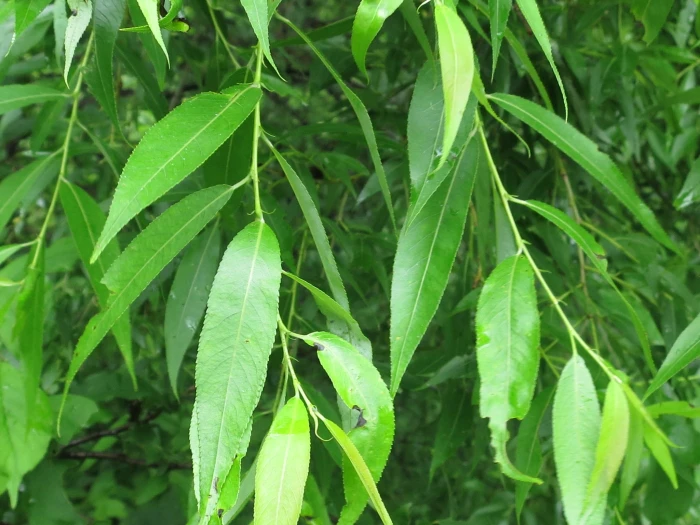Korean Willow
(Salix pierotii)
Korean Willow (Salix pierotii)
/
/

Repina Tatyana
CC BY 4.0
Image By:
Repina Tatyana
Recorded By:
Copyright:
CC BY 4.0
Copyright Notice:
Photo by: Repina Tatyana | License Type: CC BY 4.0 | License URL: http://creativecommons.org/licenses/by/4.0/ | Rights Holder: Repina Tatyana | Publisher: iNaturalist | Date Created: 2019-07-02T10:44:31-07:00 |





















Estimated Native Range
Climate Requirements for Saga, Japan
| This Plant | Your Site | Plant Suitability for Your Location | ||
|---|---|---|---|---|
| • Precipitation | 14" - 112" | 71" | Aquatic | Aquatic |
| • High Temp. | 66°F - 92°F | 90°F | Your summer temperatures are normal for this plant. | Excellent |
| • Low Temp. | -36°F - 40°F | 35°F | Your winter temperatures are normal for this plant | Excellent |
This plant may not grow well at your location - your precipitation is too high.
Summary
Salix pierotii, commonly known as Korean Willow, is a deciduous shrub or small tree native to riparian zones, wetlands, and moist open woodlands in northeast China, far eastern Russia, the Korean peninsula, and Japan. It typically grows up to 26 feet (8 meters) tall and is characterized by its slender form and the twisted nature of its wood. The Korean Willow produces catkins that are generally yellowish and appear before the leaves in early spring, adding seasonal interest to the landscape. Its bark is rough and furrowed, contributing to its unique texture in garden settings.
Korean Willow is valued for its ability to thrive in moist conditions and is often used in wetland restoration and erosion control. Its adaptability to different soil types and water regimes makes it a versatile choice for gardeners. While it is not used for timber due to its twisted wood, it serves as an excellent windbreak and natural property divider in rural landscapes. In cultivation, it prefers full sun to partial shade and requires consistently moist soil. It is relatively low-maintenance but can be susceptible to willow beetle and canker diseases.CC BY-SA 4.0
Korean Willow is valued for its ability to thrive in moist conditions and is often used in wetland restoration and erosion control. Its adaptability to different soil types and water regimes makes it a versatile choice for gardeners. While it is not used for timber due to its twisted wood, it serves as an excellent windbreak and natural property divider in rural landscapes. In cultivation, it prefers full sun to partial shade and requires consistently moist soil. It is relatively low-maintenance but can be susceptible to willow beetle and canker diseases.CC BY-SA 4.0
Plant Description
- Plant Type: Shrub, Tree
- Height: 15-30 feet
- Width: 10-15 feet
- Growth Rate: Rapid
- Flower Color: N/A
- Flowering Season: Spring
- Leaf Retention: Deciduous
Growth Requirements
- Sun: Full Sun, Part Shade
- Water: High
- Drainage: Medium, Fast
Common Uses
Bank Stabilization, Erosion Control, Water Garden
Natural Habitat
Native to riparian zones, wetlands, and moist open woodlands
Other Names
Common Names:
Scientific Names: Salix pierotii, Salix dolichostyla, Salix dolichostyla var. hirosakensis, Salix eriocarpa, Salix feddei, Salix hirosakensis, Salix koreensis, Salix koreensis var. brevistyla, Salix koreensis var. pedunculata
GBIF Accepted Name: Salix pierotii